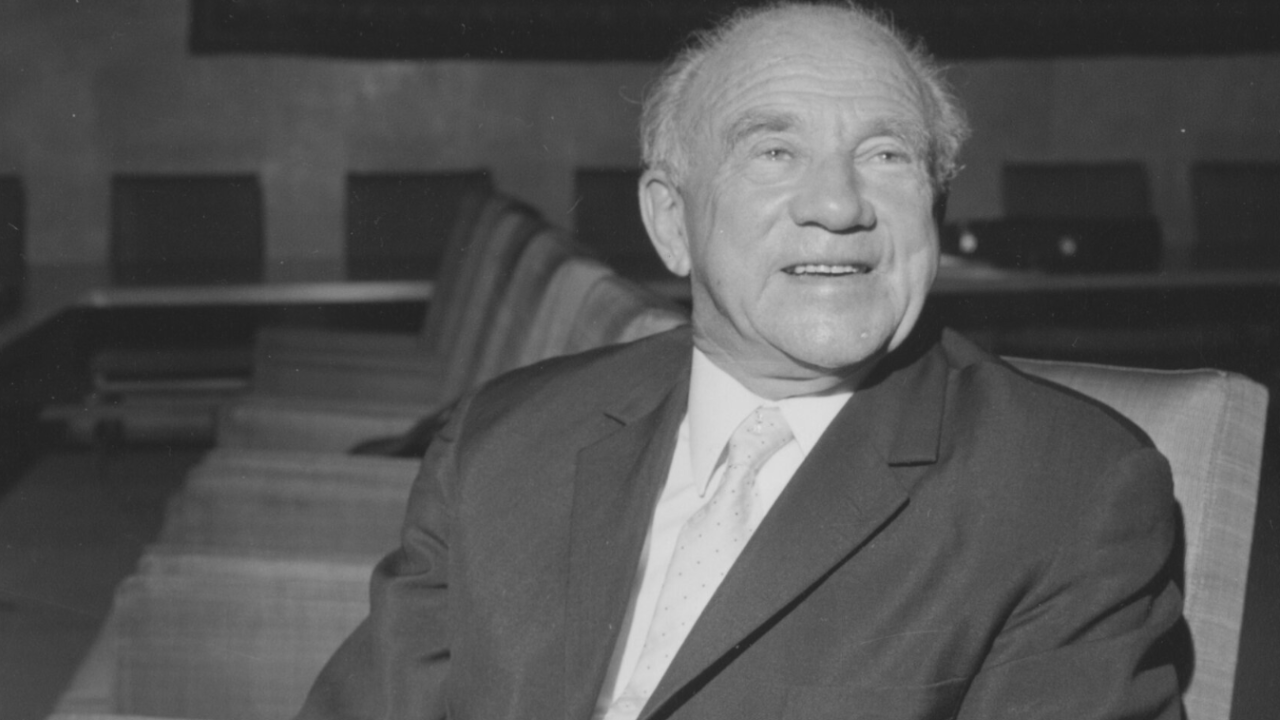#4 Werner Heisenberg

Werner Heisenberg had a whirlwind career. He achieved his doctorate at the age of 21 and his habilitation at 22. When he was 25, he became Professor of Theoretical Physics at Leipzig University, and at the age of 30 he was awarded the Nobel Prize by the Swedish Academy for the creation of quantum mechanics. The lecture documented here in an audio recording is the one Heisenberg delivered at the official opening of the annual conference of the Bavarian Academy of Fine Arts on July 9, 1970, shortly before he retired as Director of the Max Planck Institute for Physics. This is not a leisurely official opening speech. Heisenberg rattles through his theories at the speed of his thoughts. A typical characteristic of this late phase of Heisenberg’s academic career is in evidence here: his interest in philosophical questions, which he likes to approach from a mathematical angle.
At the start of his lecture, Heisenberg introduces two definitions of beauty from antiquity: A thing is beautiful because of the harmony of its parts; and a thing is beautiful because of the splendor of the phenomenon as a whole. This second definition comes from Plotinus and was subsequently adopted by Plato and Pythagoras. Heisenberg goes on to show that these definitions of beauty also apply to work in the natural sciences, and have done since the dawn of the modern age. This is because they are connected with the mathematical foundations of the natural sciences – in astronomical and physical research since Galileo and Kepler, and in chemistry and biology since the late 18th century. The power of mathematics lies in its ability to “unfold abstract structures", in other words to unlock internal rules of natural phenomena that cannot be detected from empirical observations.
Mathematical “modeling”, as it is known today, enables us to understand intellectually certain patterns of natural phenomena. Heisenberg compares them to Carl Jung’s archetypes of the human unconscious. These are regularly recurring fundamental structures that correspond to the two definitions of beauty that Heisenberg mentioned at the start of his lecture – because of their symmetry and the harmony between their parts, but also because of their ideal character. Beauty is not inconsistent with exactness; scientific thinking and intuitive experience of aesthetic structures are more closely related than one might think at first glance. What they have in common is both the regularity that is unlocked by mathematics and the inconclusiveness of every human reflection on natural and spiritual phenomena, which is what scholarship aims to explore. It is this surprising common ground that Heisenberg talks about in this short but profound lecture, delivered in Munich in July 1970.
Peter-André Alt
Date July 9, 1970
Length 29 mins
Title, series The Meaning of Beauty in Exact Natural Science, annual conference of the Bavarian Academy of Fine Arts
Language German
Audio Bavarian Academy of Fine Arts